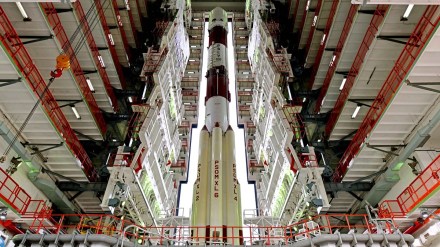India’s first solar observatory Aditya-L1, which is heading towards the L1 point to study the Sun, detected high energy X-rays emitted by the Sun and observed a “benign” solar flare, ISRO said on Tuesday. The ISRO said the spacecraft will reach its destination and orbit around the L1 point by early January.
HEL1OS (High Energy L1 Orbiting X-ray Spectrometer) is a device that can see the Sun’s X-rays. X-rays are very strong rays that we cannot see with our eyes. HEL1OS is part of a big mission called Aditya-L1, which is a satellite that ISRO, the Indian space agency, has sent to study the Sun. HEL1OS is one of the things on the satellite that will help us learn more about the Sun and what it does.
Why do we need HEL1OS?
The Sun is not always the same. Sometimes, it has big bursts of energy that make it very bright and hot. These bursts are called solar flares, and they can affect the Earth and us. Solar flares can cause problems with electricity, satellites, and communication. They can also make beautiful lights in the sky, called auroras.
Solar flares happen when the Sun lets out a lot of energy in a short time. This energy can be in different forms, like light, heat, and particles. Some of these forms we can see, but some we cannot. HEL1OS can see the ones we cannot, like the hard X-rays. Hard X-rays are very high-energy rays that can tell us a lot about how solar flares happen and what they do.
How does HEL1OS work?
HEL1OS uses two different types of detectors to see the hard X-rays from the Sun. One type is called CdTe (Cadmium Telluride), and the other type is called CZT (Cadmium Zinc Telluride). These are special materials that can change the hard X-rays into signals that we can measure and study.
It was made by the Space Astronomy Group of the U. R. Rao Satellite Centre, ISRO, Bengaluru, with help from different parts of the center. HEL1OS was turned on for the first time on Oct 27, 2023, and it has been watching the Sun for hard X-ray activities since then.
